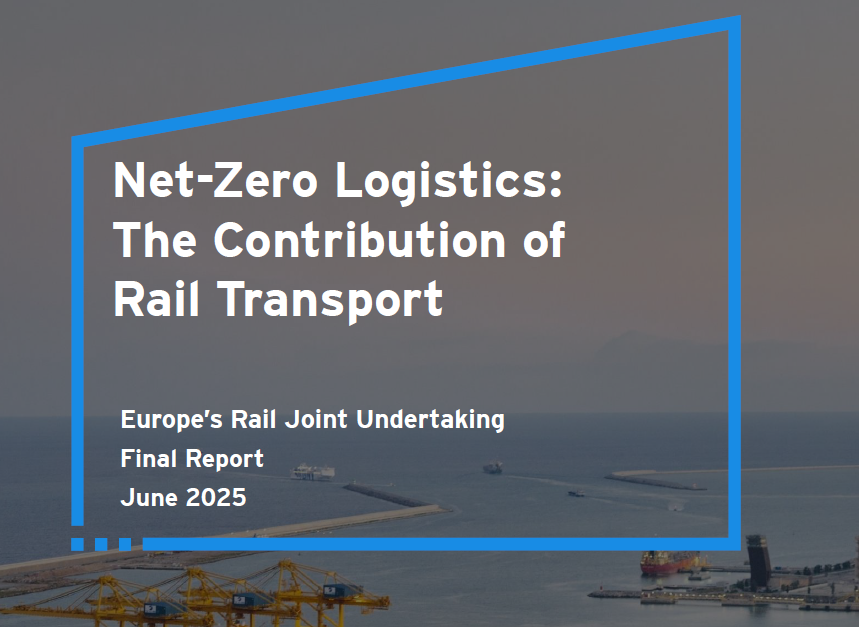Europe must take decisive steps to simplify and modernise its rail systems to strengthen competitiveness,...
Deliverables published by the project
Deliverable D20.1 Communication and Dissemination Plan
The FP3-IAM4RAIL project focuses on seven different integrated demonstrators for rail assets which are key for Research and Innovation (R&I) in the rail sector. Integrating asset condition information obtained via advanced monitoring with decision-making tools and into the Traffic Management System (TMS), combining available information with Artificial Intelligence (AI) and digital twins are key R&I topics covered in FP3-IAM4RAIL.
FP3-IAM4RAIL aims to reinforce the next generation of Intelligent and Integrated Rail Asset Management, providing and demonstrating innovative solutions covering fixed and rolling stock assets, minimizing the life cycle costs of assets and extend their lifetime, while meeting safety requirements and improving the reliability, availability, and maintainability of the rail system.
The communication and dissemination plan is a living document setting out a strategy to maximise the impact of the FP3-IAM4RAIL project, to increase its visibility and to ensure that the project outputs reach a wide audience of relevant stakeholders. The plan is based on EU-Rail’s communication policy and communication strategy and on the common goal of strengthening the overall EU-Rail programme1, while addressing the specific objectives and topics covered by FP3- IAM4RAIL. This is done by highlighting FP3-IAM4RAIL as an important contribution to all EU-Rail projects.
Deliverable D 19.1 Workplace analysis and specifications
The aim of this report is to gather all relevant information for the development of successful, innovative, and useful exoskeleton and augmented reality technologies for assistance in railway maintenance operations.
Deliverable D 18.1 Common Framework Orientations
FP3 – IAM4RAIL WP18 was structured around 2 timeframes. In the short-term view, maintenance robots are being developed. Those robots meet business needs expressed by partners. The aims are different: some want to accompany the growth of their transport offer without having to increase the surface area of their maintenance facilities, others want to acquire new resources to accelerate an equipment deployment program, and still others want to reduce their costs or improve the quality of the information they collect.
To ensure that developments continue beyond these 4 robots, the work package aims to structure a railway robotics ecosystem in the medium-term view. This ecosystem supports the technical policy of robot modularity, which is essential for the expansion of robotics in railway maintenance.
In this first year of work, we set out to determine the main guidelines that will govern the development of common tools and methodologies for our ecosystem. The purpose of this document is to set out these orientations.
Deliverable D17.1 Use cases and specifications
So far, the use of additive manufacturing for the repair of metal components in the railway industry has not yet seen significant adoption. These activities remain mainly labour-intensive and insufficiently industrialised. Therefore, there is considerable room for improvement and progress in the sector. On the other hand, the use of different additive manufacturing technologies with polymers for the development of railway spare parts is somewhat more developed than in the case of the repair of metallic railway elements, but even so it also has a wide field of work, in which important improvements can be made together with the development of their digital storage.
Deliverable D3.1 Preparation of integrated demonstrator report on IAMS Vision, Validation & Architecture Report
The objective of this document is to describe the general architecture and the core requirements of an Intelligent Asset management System implemented in the context of a railway scenario.
D3.1 provides the necessary information to allow the design and implementation of a IAMS platform capable of collecting data from different sources and supporting both the maintenance and TMS operators in carrying out their task more effectively.
Additionally, the 2 use cases where this system will be implemented are described in detail, providing also information about the main objectives to achieve and how the whole system will be then tested and validated at the end of the project.
Deliverable D 10.1 High-Level System Architecture
This document, D10.1 in FP3-IAM4RAIL, outlines high-level system architecture aligned with EURAIL Multi-Annual Work Programme (MAWP). It is the initial output of work package 10, focusing on Intelligent Asset Management Strategies (IAMS) application refinement. Work packages 10 and 11 are vital components, addressing infrastructure asset management in FP3-IAM4RAIL. The document details the approach, use cases and architecture for WP10/11.
Deliverable D 7.1 Demonstrators Vision & Global Architecture for Checkpoints
The present document is focused mainly on the description of the vision of the future European Railway Checkpoints (ERC) from a holistic point of view.
Deliverable D5.3 Public summary with the strategy to measure and process data for Bogie & Drive components
This deliverable summarizes the activities covered in Work Package (WP) 5 as part of the Europe’s Rail Joint Undertaking (ERJU) Flagship project 3 – IAM4RAIL. The aim of this WP has been to align, develop and to some extent test different strategies and technologies to collect and transfer data using on-board technology for rolling stock. In this work package, several different companies, including Alstom, CAF, Talgo, the Dutch Railways (NS), Faiveley and Knorr-Bremse have collaborated to create concepts that are feasible and target current pain points across the fleets. Some solutions are based on new sensing equipment implemented at key points of the subsystems, while others target a wider harnessing of variables available on the train in order to support large scale data analysis. Moving on from WP5, these concepts will be applied in the demonstrators planned throughout the project as part of WP6.
D2.6 Definition of Use Cases
Definition of Use Cases, including Innovation, Business Assessment, KPIs definition and roadmap (first issue)
















